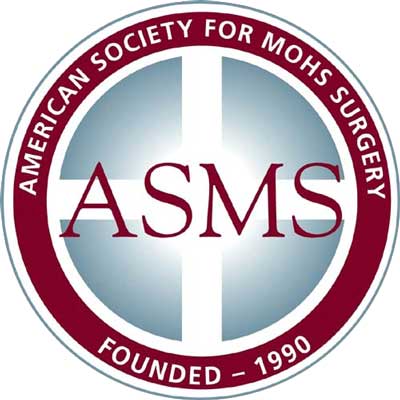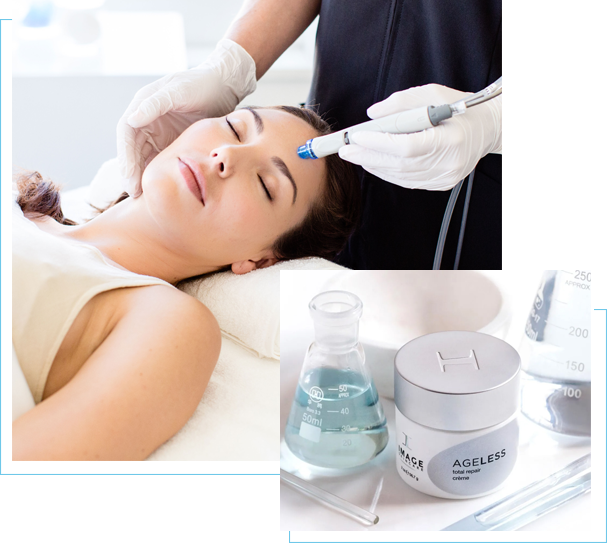
For Skin Cancer on the Face Ask for Mohs
When a skin cancer on the face needs to be removed, the single best choice is almost always Mohs Surgery. This special type of surgery, which can only done by dermatologists, allows for tumors to be completely removed while only removing as much tissue as is actually required.
Interestingly, a large study from the Plastic Surgery literature highlights how helpful Mohs is for skin cancers on the face. What is really interesting about this is that Plastic Surgeons are unable to do Mohs surgery. In order to perform Mohs surgery, the surgeon also has to read the pathology of the tumor under the microscope during the procedure. This allows the surgeon to essentially check their own margins as they go. Board certified Dermatologists have this training and are qualified to do this, but no other surgeons are. If you see a different type of surgeon for a skin cancer removal, they remove it by taking a standard margin around the tumor and then send it off to a pathologist to determine if the margins are clear.
Essentially, this study looked at 495 cases of skin cancer on the face, taking very careful measurements of the size of the original tumor and the amount of tissue that had to be removed by Mohs to get rid of the tumor. Then, they calculated the amount of tissue that would have to be removed by Standard Excision to ensure cure of 95% of the tumors:
| Tumor | Mohs Excsision (mm) | Standard Excision (mm) |
| BCC-Low Risk | 2.4 | 4.75 |
| BCC-High Risk | 3.7 | 8 |
| SCC-Low Risk | 2.6 | 5 |
| SCC-High Risk | 5.3 | 13.25 |
| SCC-High Risk | 5.3 | 13.25 |
More to the Story
The reason the margins are different is because with Mohs surgery, the margin is checked by the dermatologic surgeon during the procedure and you have >99% confidence that the tumor is actually gone. Each skin cancer is different, so there ends up being a lot of variability in how much tissue is removed. For example, one 4 mm tumor may be well confined and may only need a 2 mm margin, but another might have extensive roots and may head off in one direction that ends up needing a 7 mm margin. The total size of this is called the final defect size.
However, with standard excision, the tumor and marginal skin has to be sent off to a pathologist to be examined after the surgery is completed. In order to be confident that the tumor is gone, you have to make an educated guess about how much to remove.
In addition, since each tumor is different, its hard to know how much extension there is. Sometimes there is almost none, other times there is a lot. If there is little to no extension, you only need to remove a little tissue. If there is a lot of extension, you need to remove a lot. By checking the margins as you go, with Mohs you end up removing only what is necessary. But, if you are doing standard excision, you need to take a margin that is likely to remove the tumor most of the time, send it off to path, and keep your fingers crossed.
The bottom line
You can see the difference in margins required, but the table really should have another row. A row that reminds you of the difference in confidence.
| Tumor | Mohs Excsision (mm) | Standard Excision (mm) |
| BCC-Low Risk | 2.4 | 4.75 |
| BCC-High Risk | 3.7 | 8 |
| SCC-Low Risk | 2.6 | 5 |
| Success Rate | 99% | 95% |
With Mohs, you are 99% sure the tumor is gone. With standard excision, even with a much bigger margin you are still only 95% sure the tumor is gone.
Your choice
The evidence for Mohs is clear. For skin cancers on the face, it is far superior. Because Mohs surgery requires the surgeon to also be the pathologist during the surgery, dermatologists (who learn more skin pathology during their training than most pathologists do) are the only specialists who can perform Mohs surgery. Plastics and ENT surgeons can be useful for reconstruction of large defects after Mohs surgery, but when they remove skin cancers they have to take much larger amounts of tissue than a Mohs surgeon would.
Why not Mohs for Everything?
Like everything else, it is largely a question of cost vs benefit.
First, there is the impact that a large defect will make on different areas of the body. For instance on the back, arm, or thigh taking a big margin is really easy and doesn’t really impact the size of the scar that much. With a lot of loose skin on the back, the difference between a 15 mm defect and a 25 mm defect isn’t nearly as consequential as it is on the cheek.
Second, there is the consequence of surgical failure. If surgery fails to remove the tumor, the tumor will come back. When tumors recur, more tissue will need to be removed-often much more. But, on the back, or chest, this is still often not a huge issue, but tumors that recur on the face can be a major problem.
Studies have shown that although Mohs surgery initially costs more, for tumors on the face it ultimately proves cost effective because of its superior cure rate.


